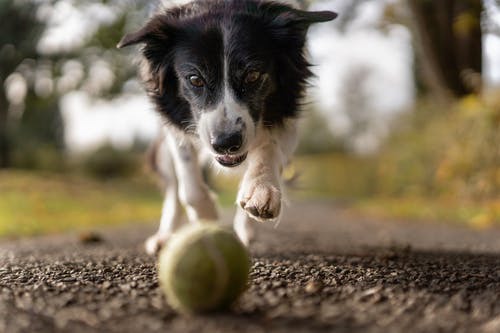
Welcome to the exciting journey of puppy parenthood! Among the flurry of puppy kisses, playtime, and cuddles, it’s crucial to consider the most opportune time to start training your new furry friend. Training is not just about teaching your dog manners; it’s also about building a solid bond and setting the foundation for a happy and well-adjusted canine. But when exactly is the right time to begin?
The Best Age to Begin
Puppies are sponges for learning from the moment they open their eyes. However, the ideal age to formally start training is around 8 to 12 weeks. This critical period of a puppy’s life is when they are most open to new experiences, and their brains are primed to soak up information. Starting training during this window can have immense benefits for their future development.
Understanding Puppy Development Stages
Puppies go through several developmental stages, and knowing these can help you tailor your training appropriately. Fear periods, teething, and adolescence are all stages that come with specific challenges and opportunities for learning. Adjusting your training methods as your puppy grows allows you to support their education through every stage of puppyhood.
The initial puppy training stages lay the groundwork for a lifetime of good behavior and companionship. It’s not just about teaching commands; it’s about nurturing a trusting relationship with your dog. Remember, training doesn’t end after puppyhood—it’s a continuous process that evolves with your pet’s age and needs.
Components of Training
Socialization
Before diving into obedience skills, a puppy needs to be socialized. Socialization involves exposing your puppy to various people, animals, environments, and experiences. This helps them become well-rounded and less fearful in different situations. Training is crucial and should be initiated as soon as your furry pal has vaccinations, typically around eight weeks of age. A well-socialized puppy is usually more receptive to training and learning.
Basics
Training should start with basic commands like ‘sit,’ ‘stay,’ ‘come,’ and ‘leave it.’ These foundational commands are crucial for your puppy’s safety and peace of mind. Simple and consistent training sessions of 5 to 10 minutes a few times a day can yield significant results. Always use positive reinforcement, as puppies respond best to rewards and praise.
House Training
One of your first training goals is house training. The best way to achieve this is to establish a consistent routine for your puppy. Take them outside regularly, especially after meals and naps, and always praise them for doing their business outside. This teaches them where it’s appropriate to relieve themselves and helps set a schedule that will benefit you both.
Crate Training
Crate training can be a practical part of puppy training when done correctly. It helps with housebreaking, provides a safe space for your puppy, and facilitates a structured routine. Begin crate training by making the crate a positive environment with treats and favorite toys, and avoid using it as a punishment. Gradually increase your puppy’s time in the crate, ensuring they are comfortable and not anxious.
List of Essential Training Tools
-
Treats for Positive Reinforcement: High-quality treats are essential for positive reinforcement during training sessions. They serve as rewards to encourage desired behaviors in dogs.
-
A Comfortable Crate: A comfortable and appropriately sized crate is a valuable tool for training, including crate training, providing a secure space, and assisting with housebreaking.
-
A Sturdy Leash and Collar: A sturdy leash and collar are fundamental tools for teaching dogs leash manners and basic commands and ensuring their safety during walks and outings.
-
Interactive Toys for Mental Stimulation: Interactive toys, such as puzzle feeders and chew toys, are crucial for mental stimulation. These tools can help prevent boredom and destructive behaviors.
-
Training Clicker (Optional): A training clicker, while optional, can be a valuable tool for marking desired behaviors with a distinct sound. This aids in communication and reinforces positive actions during training sessions.
Puppy Training Class Benefits
Enrolling your puppy in a group training class can be a fantastic way to supplement your home training. Not only do these classes help reinforce basic commands, but they also offer priceless opportunities for socialization with other dogs and people. Look for classes that promote positive training techniques led by experienced trainers.
Services offered by trusted facilities like Central Bark exemplify what comprehensive care can include—offering a mix of socialization, exercise, and enrichment activities that cater to all aspects of your dog’s development, far beyond the basics of training.
When to Seek Professional Help
If you encounter any issues or your puppy displays signs of behavioral problems, do not hesitate to seek professional help. A professional dog trainer can provide bespoke advice and support tailored to your puppy’s needs, ensuring problems are addressed early on.
Training is integral to your puppy’s development; it’s just one aspect of comprehensive dog care services. These services can include everything from grooming to veterinary care, dietary management, and beyond. Services like dog training are designed to support your dog’s overall well-being, ensuring that aside from being well-behaved, they’re also healthy and happy.
Wrapping Up
There is no universal timeline for every puppy, but a general rule of thumb is the earlier you start, the better. From the moment your puppy comes home, begin by establishing rules and routines.
Take the time to understand their development stages, start with simple commands, and be patient—training is a journey you and your puppy will navigate together. Consistency, positive reinforcement, and love are the keys to a well-trained and happy dog.

